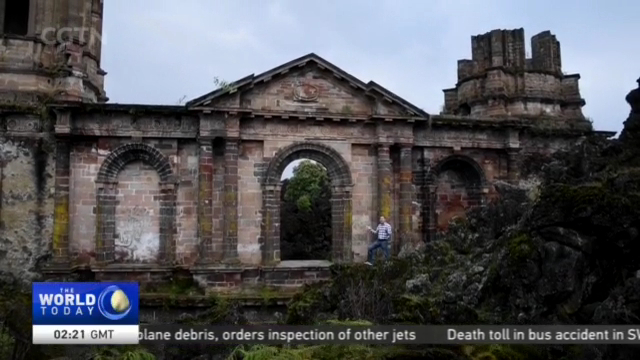
11:19, 31-Oct-2018
Mexico Cultural Eruption: World's youngest volcano becomes tourist attraction
Updated
10:43, 03-Nov-2018
02:53

Mexico is home to the world's youngest volcano. The eruptions have scared and displaced the surrounding indigenous communities. But now, instead of driving people out, it's drawing them in - from all over the world. CGTN's Alasdair Baverstock has more on this "cultural eruption".
In 1943 the Paricutin Volcano made its unexpected and dramatic debut - springing from a cornfield in Western Mexico - and frightening local farmers.
Its eruptions would continue for nine years, engulfing nearby towns and displacing local communities.
Now an elder among Michoacan state's indigenous Purepecha people, Francisco Gomez was ten years old at the time.
FRANCISCO GOMEZ PUREPECHA INDIGENOUS ELDER "The volcano would throw earth and lava into the air, and it would look like explosions in the sky. The ash in the air spread and the sky turned black for many days. Then it began to rain ash everywhere, and the lava flow moved slowly towards our town. I was a boy, and I couldn't understand why my parents and grandparents cried."
The towns consumed by the volcano's activity now lie buried beneath nine meters of hardened lava.
ALASDAIR BAVERSTOCK PARICUTIN VOLCANO, MEXICO "This natural disaster site has become a popular tourist attraction, drawing visitors from across the country to marvel at the landscape of a town engulfed by molten rock."
Seeking an alternative to Mexico's beaches, many international tourists come, too to see the volcano ruins, and get a taste of the local indigenous culture that remains alive here.
"Oh my gosh, it's just so remote, so special, it's really unique."
"You're actually stepping back in time 200 years. People in this village, although they have some modern conveniences, live how they did 200 years ago, very little has changed with their culture. They speak their native language of Purecha, so it's a unique thing."
Today, the ruins have become part of the evolving volcanic landscape.
And what was once a tragedy for the local people, has turned into a source of income.
"The ruins and the volcano here are the source of work for the men. Many people here see it as a blessing, because of the work it has brought."
The experience of the Paricutin lava flow is visually and culturally stimulating; a reminder of the ferocious power of nature and the indigenous culture's ability to adapt. Alasdair Baverstock, CGTN, Michoacan State, Mexico.

SITEMAP
Copyright © 2018 CGTN. Beijing ICP prepared NO.16065310-3
Copyright © 2018 CGTN. Beijing ICP prepared NO.16065310-3